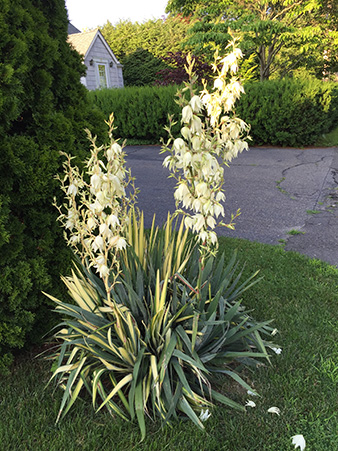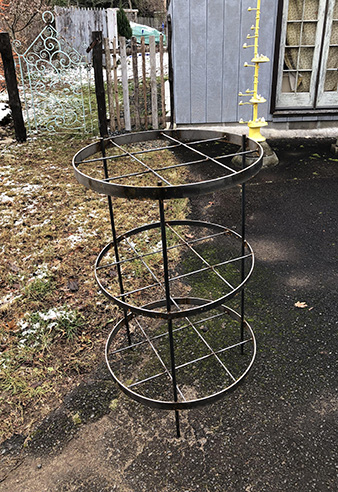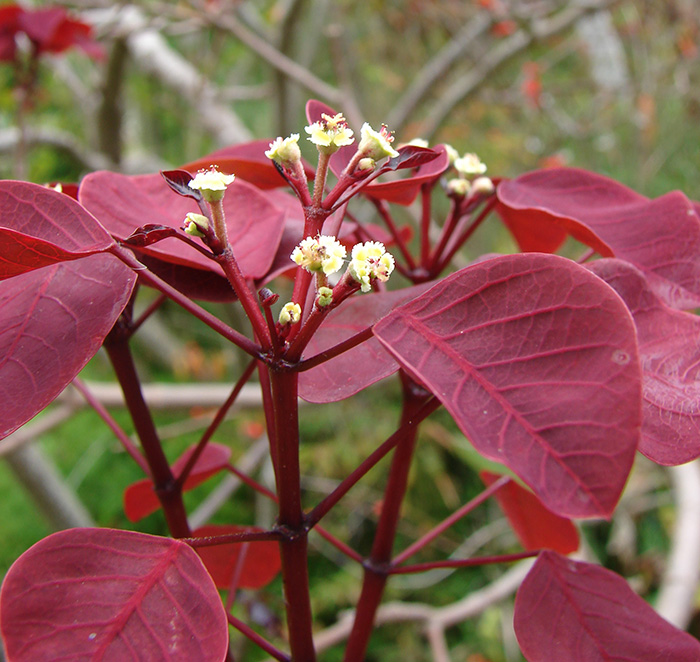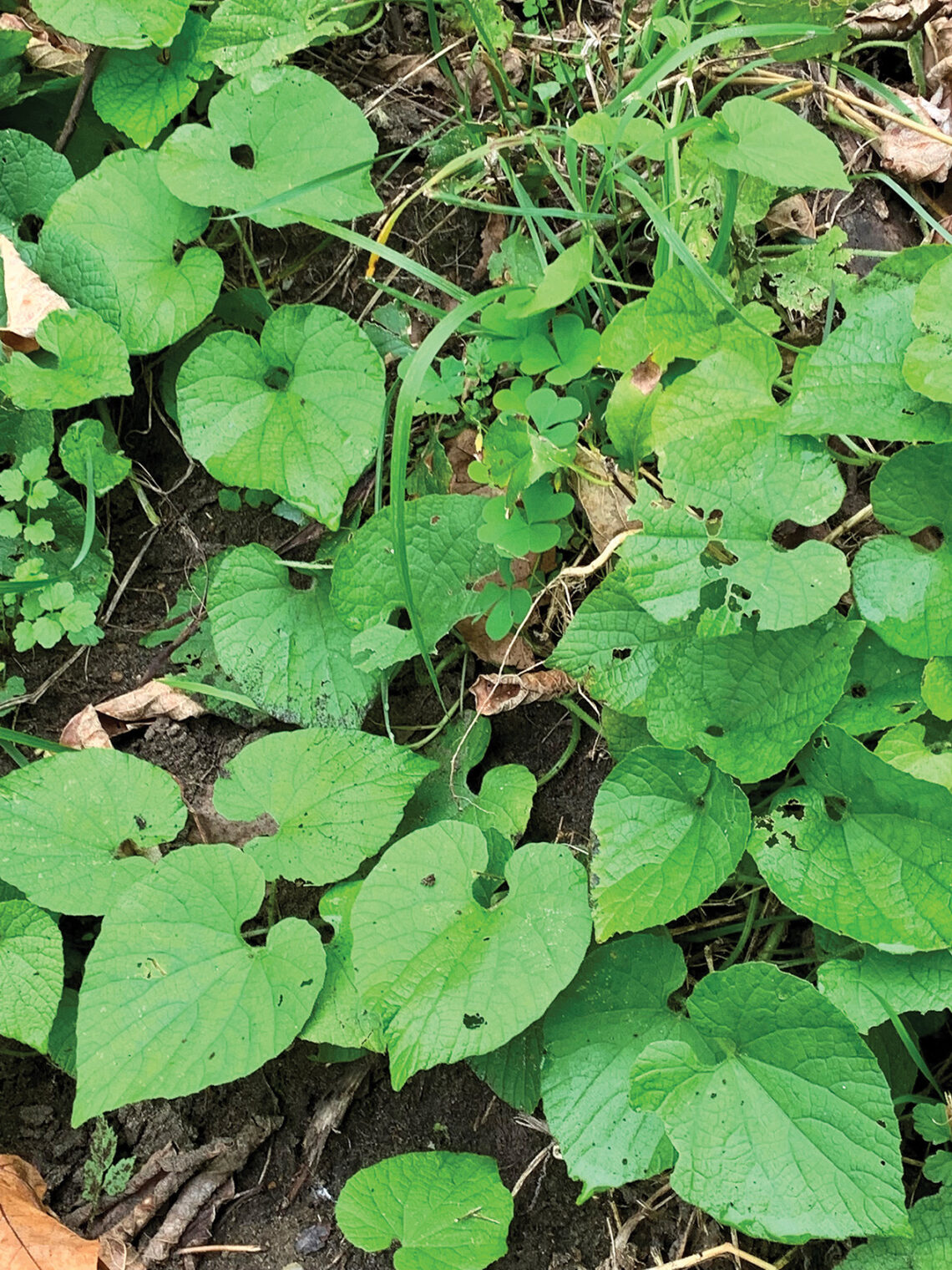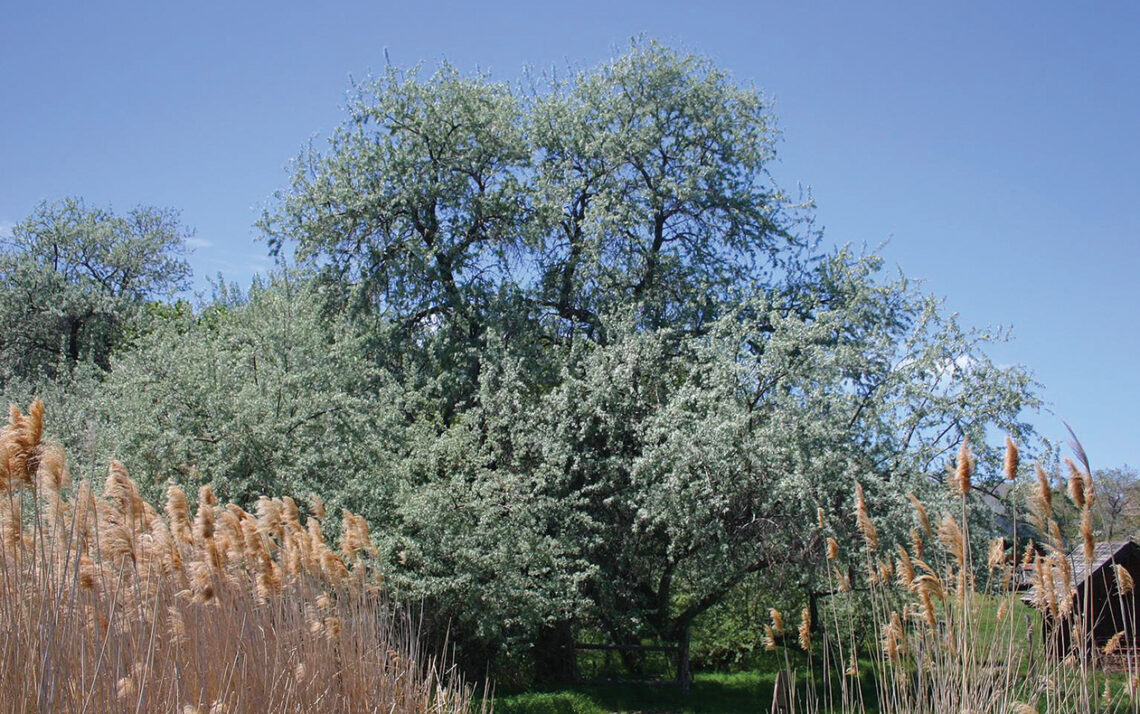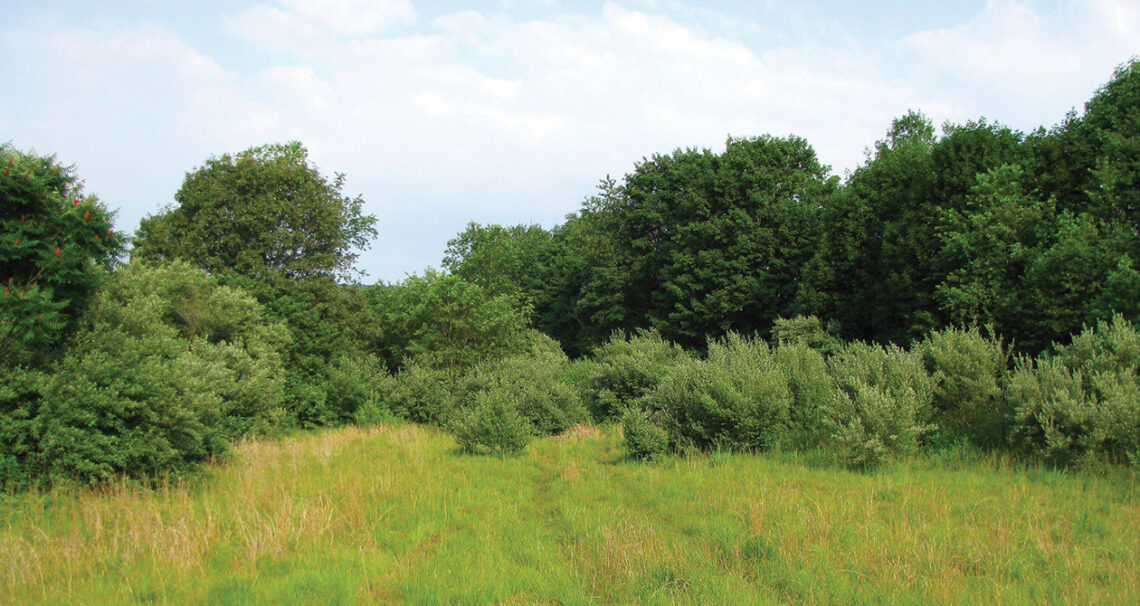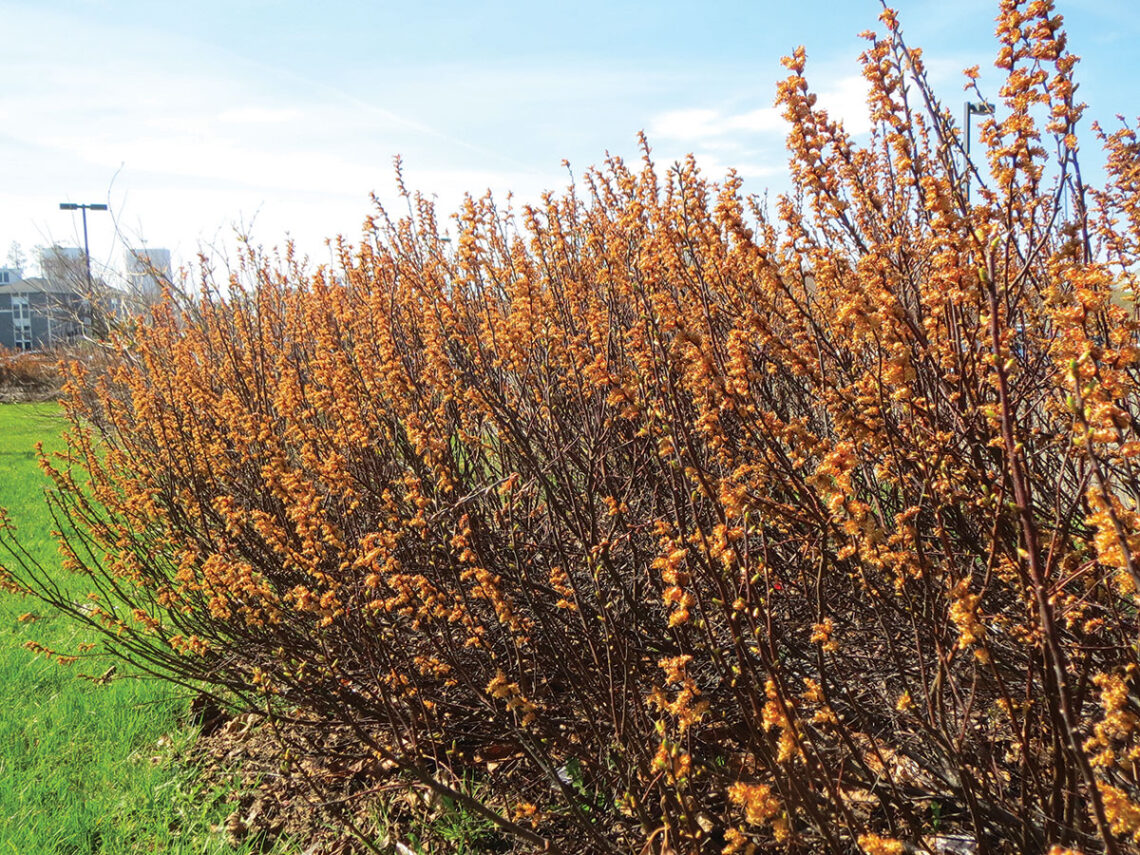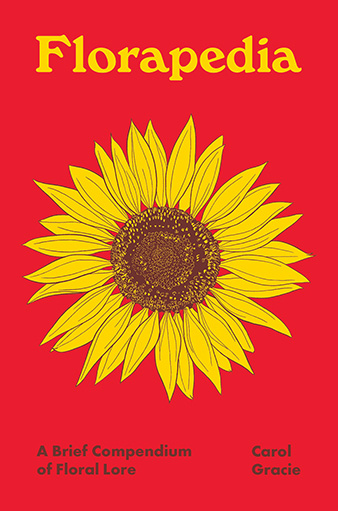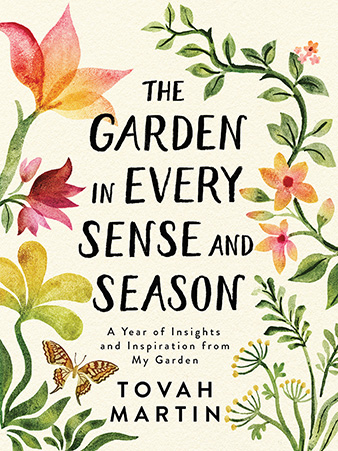How does a gardener/homeowner deal with a constant parade of dog walkers and their pooches stopping, sniffing, and marking territory? In some neighborhoods the constant showers can be really tough on — if not deadly to — the plants that are targeted. While walking around town I’ve seen an assortment of signs warning dog owners to keep their companions from watering plantings; some are cute, some get a little snarky, and some have a nearby jug of water at the ready, presumably for the dog’s guardian to douse a plant when the dog fails to read the sign. Not having a dog, I’m no expert on the etiquette involved but…
-
-
Jumping Worm Protocol
A new season of plant sales, swaps, and gardening means facing the jumping wormproblem. Avoiding New IntroductionsHere’s a compendium of broad guidelines from several university extensions and the Connecticut Agricultural Experiment Station (CAES) to help you deal responsibly with these invaders going forward. To avoid unwanted introductions, one should have a basic management protocol in place. The boxed links offer a deeper dive and can help those new to jumping worms catch up. The enemy: Jumping worms (Amynthas spp.) are smooth, glossy brown or grayish and they move more like a snake than a ‘traditional’ earthworm. They hatch in April/May from eggs in protected cocoons laid in the fall, live…
-
Storing Stakes
Last fall I asked Bob Keating, renowned metal sculptor and plant support creator (and advertiser), if he could help us solve a problem: we needed a better – and more presentable – way to hold the many stakes and poles used in our garden. A stakeholder. When not in use and over the winter, we leaned them up against the fence, placed them on the cross struts behind the fenceposts, or laid them down on the ground near the base. After replacing the fence in 2021 and no longer willing to put up with such clutter we started using an old Rubbermaid trash can with holes in the bottom. Well,…
-
Annuals
Photo / Forest & Kim Starr, CC BY 3.0Euphorbia cotinifolia (Tropical Smokebush) By Steve Silk PART I – ANNUALS IN THE SUMMER GARDEN Pastels are pretty in spring, but come the dog days of summer, those dainty pinks, powdery blues, and pale primrose yellows look mostly milquetoast. They’re wimpy. Washed out. When the July and August sun blazes mercilessly on the landscape, it’s time for gardeners to bring out the big guns – bright, saturated, full strength color and plenty of it. We’re talking smoldering reds, fiery oranges, sunny yellows and maybe a deep, dark blue or two. Those unashamedly bold hues are just the antidote for summer heat and…
-
Goldencreeper Found in Kent
A CAES PRESS RELEASE The Connecticut Agricultural Experiment Station (CAES) has announced the discovery of a new non-native invasive plant in Connecticut. Scientists from CAES in collaboration with Robin Zitter and Nikolle Lizana, a local horticulturist and landscape gardener, respectively, have discovered Goldencreeper (Thladiantha dubia), a highly invasive non-native plant, in Kent. Goldencreeper, aka Manchu tuber gourd, is a member of the gourd (Cucurbitaceae) family. It is native to Northeastern China, Korea, and Russia. It is believed to have been introduced into North America as an ornamental plant. Currently, it is present in Illinois, Massachusetts, Minnesota, New Hampshire, New York, and Wisconsin inthe United States and in the provinces of…
-
Invasive Russian Olive
RUSSIAN OLIVE (Elaeagnus angustifolia) is native to southern Europe and western Asia. According to the Native Plant Trust “it has been planted extensively throughout the United States as a windbreak, ornamental shrub, soil stabilizer, and wildlife attractant.” It was brought to the United States in the early 1900s. For many years, the U.S. Soil Conservation Service (nowthe Natural Resources & Conservation Service) recommended it for wildlife habitat and as a windbreak. IdentificationRussian olive is a thorny shrub or small tree that can grow to 25 feet or higher. It prefers disturbed areas, roadsides, forest edges, meadows and fields. The lanceolate leaves are arrangedalternately. They’re 1.5-3.25 inches long with a smooth…
-
Invasive Autumn Olive
AUTUMN OLIVE (Elaeagnus umbellata) is a large deciduous shrub or small tree that’s considered invasive in Connecticut. Native to Eastern Asia, from the Himalayas to Japan and Korea, it’s also called Japanese silverberry, Japanese oleaster and cardinal olive. Introduced to the U.S. in 1917 it has been used as an ornamental but also for wildlife habitat and erosion control. In Connecticut it was routinely planted along the sides of highways. IdentificationAutumn olive can grow to 20 feet or more. It has alternate oval leaves with wavy margins. The 2-4 inch long leavesare gray-green on top and silver underneath. Some branches may have sharp thorns. The fragrant flowers are arranged in…
-
UConn Unveils NativeStar® Trademark
By Anna Zarra Aldrich, CAHNR The University of Connecticut, in collaboration with researchers in the College of Agriculture, Health and Natural Resources (CAHNR), have established a trademark for improved cultivars of novel, native plant species. Professor of plant breeding and horticulture Mark Brand and associate professor of horticulture Jessica Lubell-Brand have been developing new cultivars for years, making more attractive and manageable plants for landscaping in Connecticut and areas with similar climates. These plants will be marketed under the NativeStar® trademark. The NativeStar® trademark is inspired by the fact that all of its plants are native to the northeast region of the United States, and because they have demonstrated to…
-
Florapedia
By Will Rowlands This book is a frolic through the landscape of botany and history. It’s a natural for plant geeks but I can see “normal” people enjoying it, too. It’s an omnibus book in which Carol Gracie samples a rich history of botanists and botanical artists. Parasitic plants, underground plants, carnivorous plants, plants without chlorophyll, plants without roots, plants that communicate with each other, plants that impersonate the mates of insects. They’re all here. The Franklinia tree (Franklinia alatamaha), once a native, is now considered extinct in the wild. All trees are descended from trees collected by William Bartram in Pennsylvania. The tree was named after Benjamin Franklin, a…
-
The Garden in Every Sense & Season
By Will Rowlands Tovah Martin’s latest book, The Garden in Every Sense and Season – A Year of Insights and Inspiration from My Garden, came out this spring. Tovah is one of our favorite writers and we recommend this book to anyone who wants to connect with their garden on a deeper level. Tovah gives a lot of presentations and her interactions with attendees provides her with a good look at what’s going on with gardeners. This has shown her that many gardeners are so busy with their chores that they can miss the many joys of gardening. Her new book is organized by season and each season is broken…
